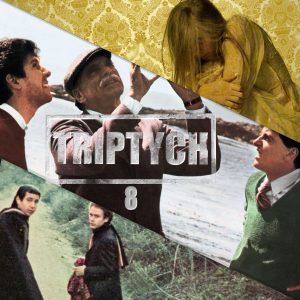I can’t quite believe it. What started as a minute little thought-seed, during one insomniac night back in mid-2024, then evolved into an actual thing with a real-live team. Joel and Sophie were in pretty quickly after the thought was shared, and then Owen came up trumps as our techie.
Now look! We have reached the 8th, and final, episode of Triptych Season 1! What a ride it’s been. But before delving into this week’s show-notes, we would LOVE to hear from YOU.
So here’s a link to a brief TRIPTYCH Listener Survey (it should only take 5-10 minutes, max) to help us develop and grow Triptych for Season 2 and even beyond!
But for now, back to the show… We decided to take the masterpieces in chronological order this time.
The Masterpieces
1. The Yellow Wallpaper (1890)
Charlotte Perkins Gilman (as she became after her second marriage) suffered intolerable hardships in the lead-up and aftermath of giving birth in 1885 to her only child, Katherine. Today, she would be swiftly diagnosed with severe postpartum depression, but of course in the 1880s and 90s, the concept was light years from a medic’s vocabulary. She was given a ‘rest cure’, a strictly policed form enforced solitude and passivity: confined to bed, barred from social interactions, limited diet, minimal mental stimulation (so little or no reading or writing). If anything was guaranteed to aggravate mental illness, this was it.
Highly unusual for the time, she finally divorced her husband Charles Stetson in 1894, although both had recognised that would be necessary as early as 1888.
She wrote what would become her most famous short story, The Yellow Wallpaper, in 1890, about a young mother’s ghastly plummet into madness in circumstances that clearly echoed her own. It is brilliantly paced but utterly chilling in its artful, unreliable narrative that manages to speak with piercing clarity. It’s easy to see why it became a staple of feminist literature, but it shouldn’t be confined to such labels.

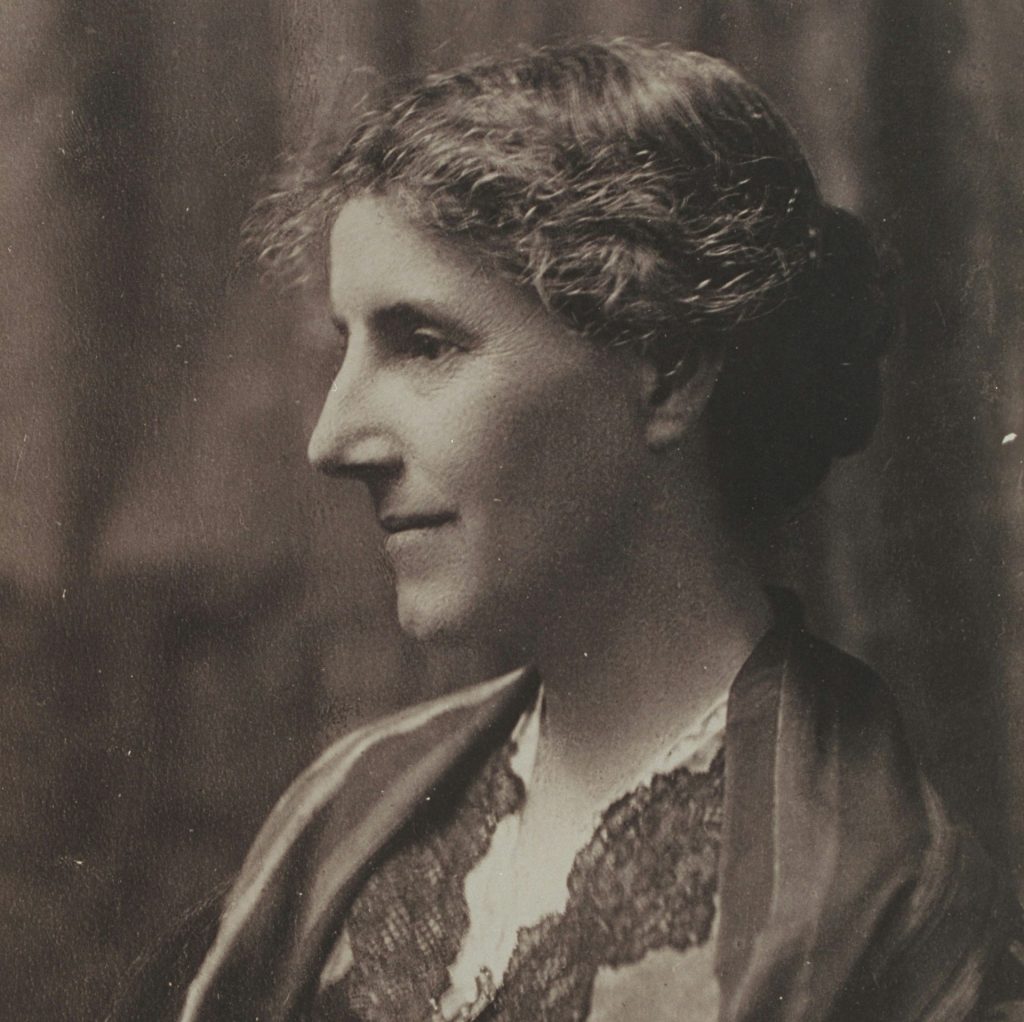
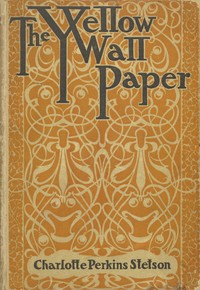

It is astonishingly good writing, pure and simple. Here are some relevant links:
- Read The Yellow Wallpaper (in various e-formats)
- Gothic Fiction
- The doctor who devised ‘rest cure’ therapy, Silas Weir Mitchell.
- Including women in Clinical trials before 1993.
- Daphne du Maurier’s Rebecca
- M. R. James’ Ghost Stories (complied 1931)
- Aimee Byrd’s Recovering from Biblical Manhood and Womanhood (NB cover!)
2. I am a Rock, by Simon & Garfunkel (1965)
Paul Simon is one of the true greats of American popular music. I mean, who else living has both his creative range and longevity? A brief ChatGPT query offers only Willie Nelson and Dick van Dyke (!?, though he is 100 this year). Both great folks – but IMHO not a patch on Paul Simon. You mention Bob Dylan, Herbie Hancock, or Johnny Mathis? But their careers are marginally shorter, believe it or not.
He first came to global fame (as well as Sophie’s obsession) through his 10-year partnership with fellow New Yorker, Art Garfunkel. It was hugely successful, but towards the end, became highly fraught; they formally split in 1970. This song, I am a Rock, was first released in 1965 but only in the UK. It would gain a global hearing when included in their 1966 album Sounds of Silence.
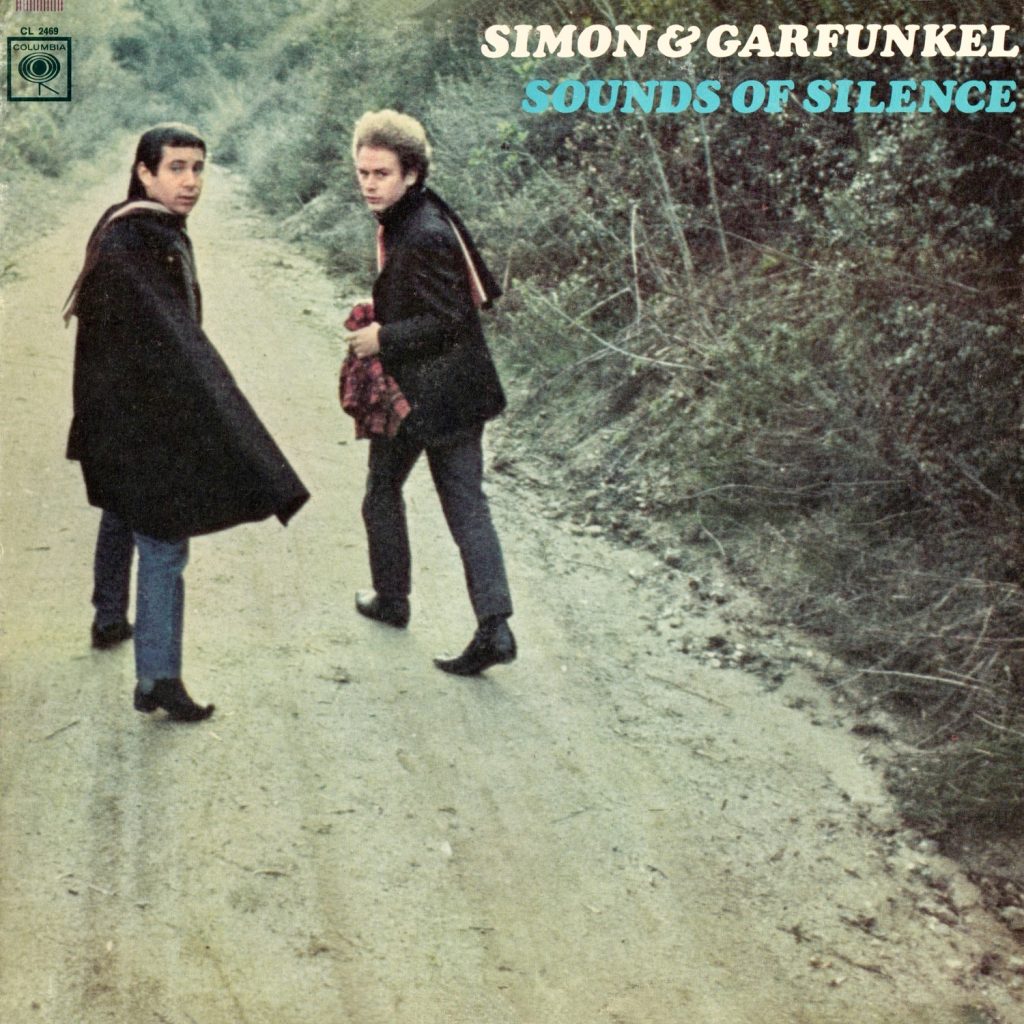

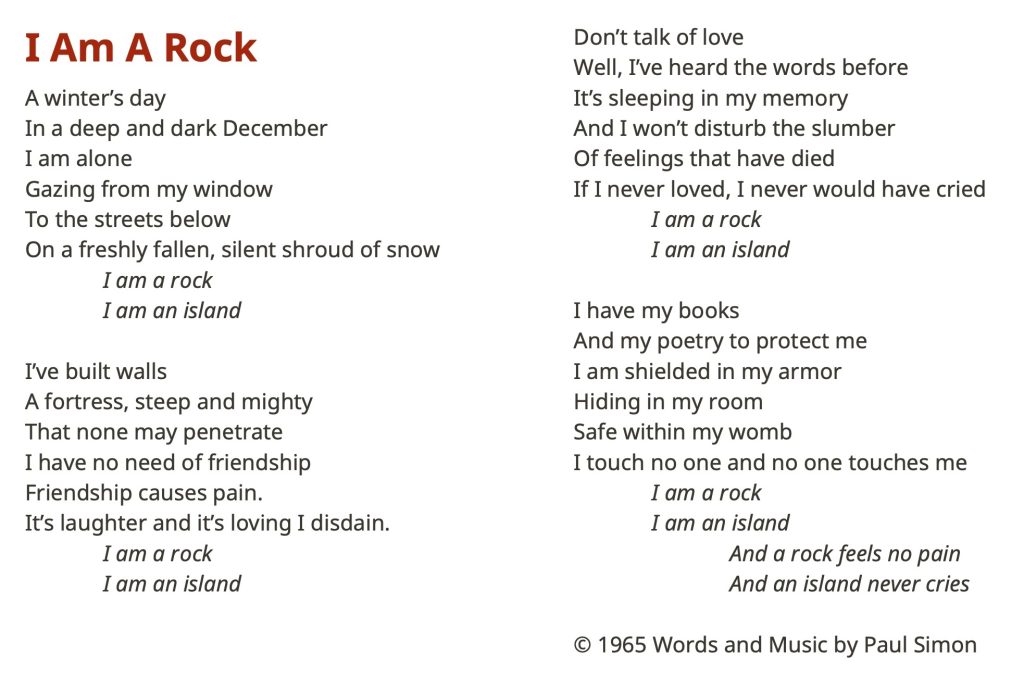
3. Local Hero (dir. Bill Forsyth) (1983)
In an earlier episode, we shared our artistic proselytising failures: those things we loved that failed to impress anyone else. Mine was Local Hero. So we put it under the Triptych microscope, with interesting results!
Bill Forsyth wrote and directed (on the back of his success with Gregory’s Girl), David Puttnam produced (fresh from Chariots of Fire Oscar glory). The film’s scale is simultaneously tiny and global. Its tone is light and quirky, almost absurd at times, but manages also to prompt serious questions. It’s nostalgic certainly, and perhaps trades in caricatures of a long-past Scotland. But it is a film with heart that really grows on you (though only perhaps, as Joel says in the discussion, once you have an idea of what to expect!).
The premise is simple. US megacorp oil company wants to buy remote fishing village on Western Highlands coast to turn it into a massive refinery. Agent sent from Houston to soften the inhabitants up for the deal. That’s it. But nothing goes smoothly. And that’s the joy of the whole. A wonderful cast (including Burt Lancaster in one of his last big roles; the great Fulton Mackay, Denis Lawson, not to mention Peter Capaldi in his very first etc), brilliant script, and dollops of wonder and natural beauty. Oh and Mark Knopfler’s gorgeous soundtrack.
As several critics have pointed out, it is effectively a modern fairy tale.
- Lovely tribute to the film and to Pennan (where some of the filming took place), 40 years on. Oh, and I was wrong – they DID have, and STILL have a red phone box!
- The Bechdel-Wallace Test: a simple (and therefore not uncontroversial) means of analysing the portrayal of women in fiction (esp. film): does the work feature at least two women in conversation about something other than a man, and do they both have names?
- The legacy of Monty Python‘s absurdism?
- 10 fun facts about the movie!
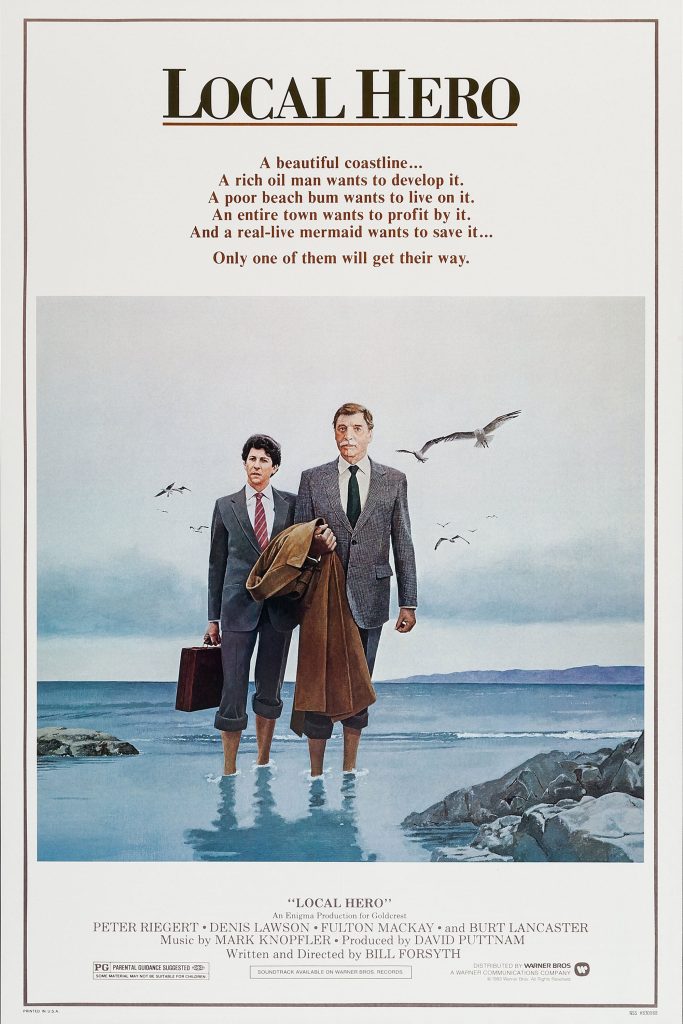

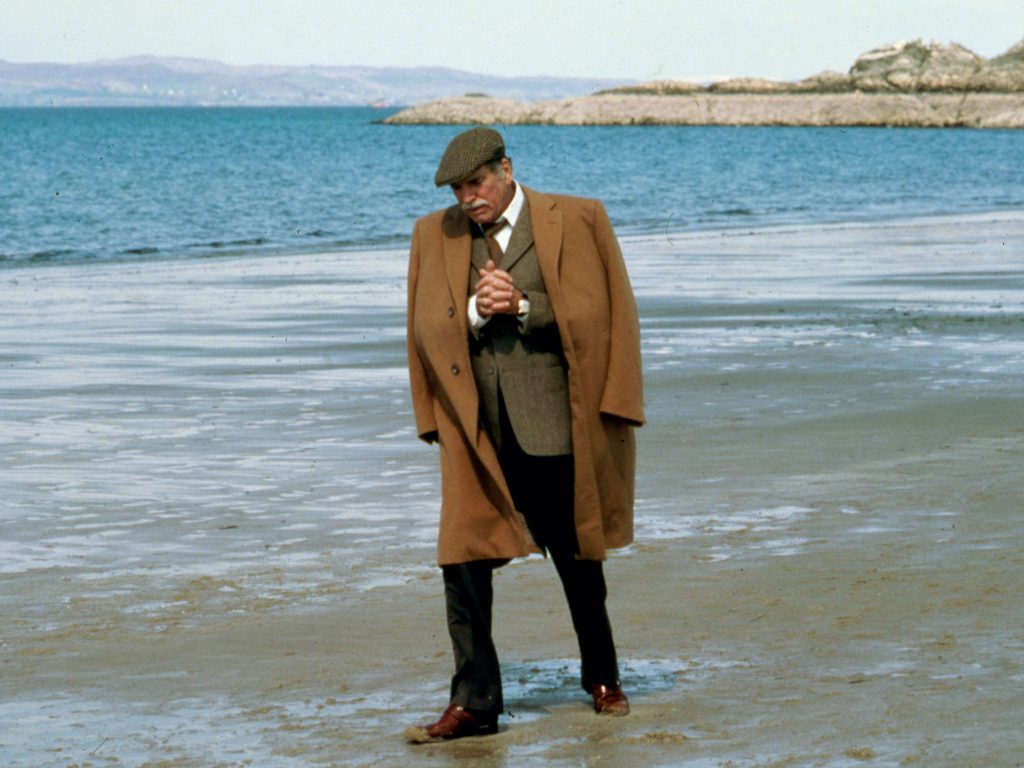
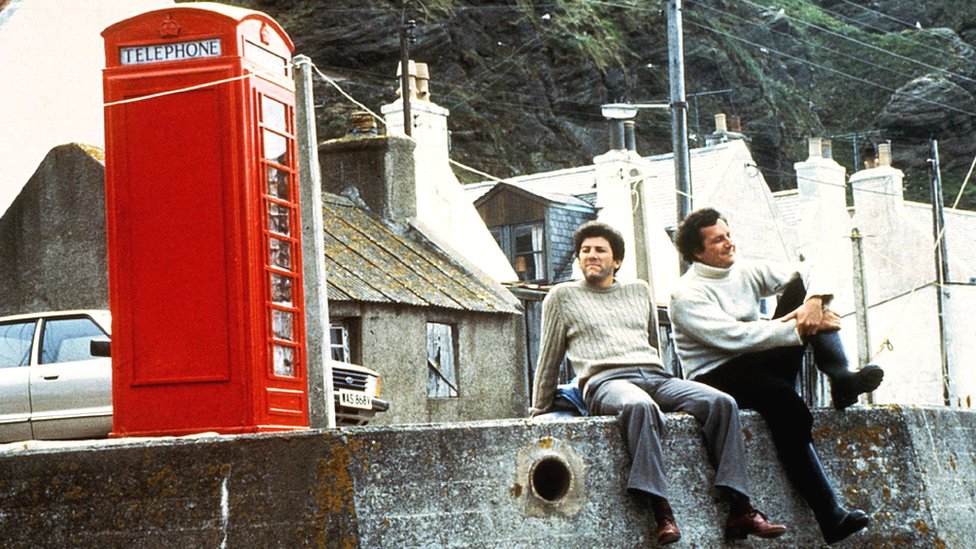

Other Mentions
Our childhood artistic joys:
- The Doodler: The Poetry of Lord Byron.
- The Scribbler: Mr Benn.
- The Crooner: Drawing horses.
Podcast: Play in new window | Download

